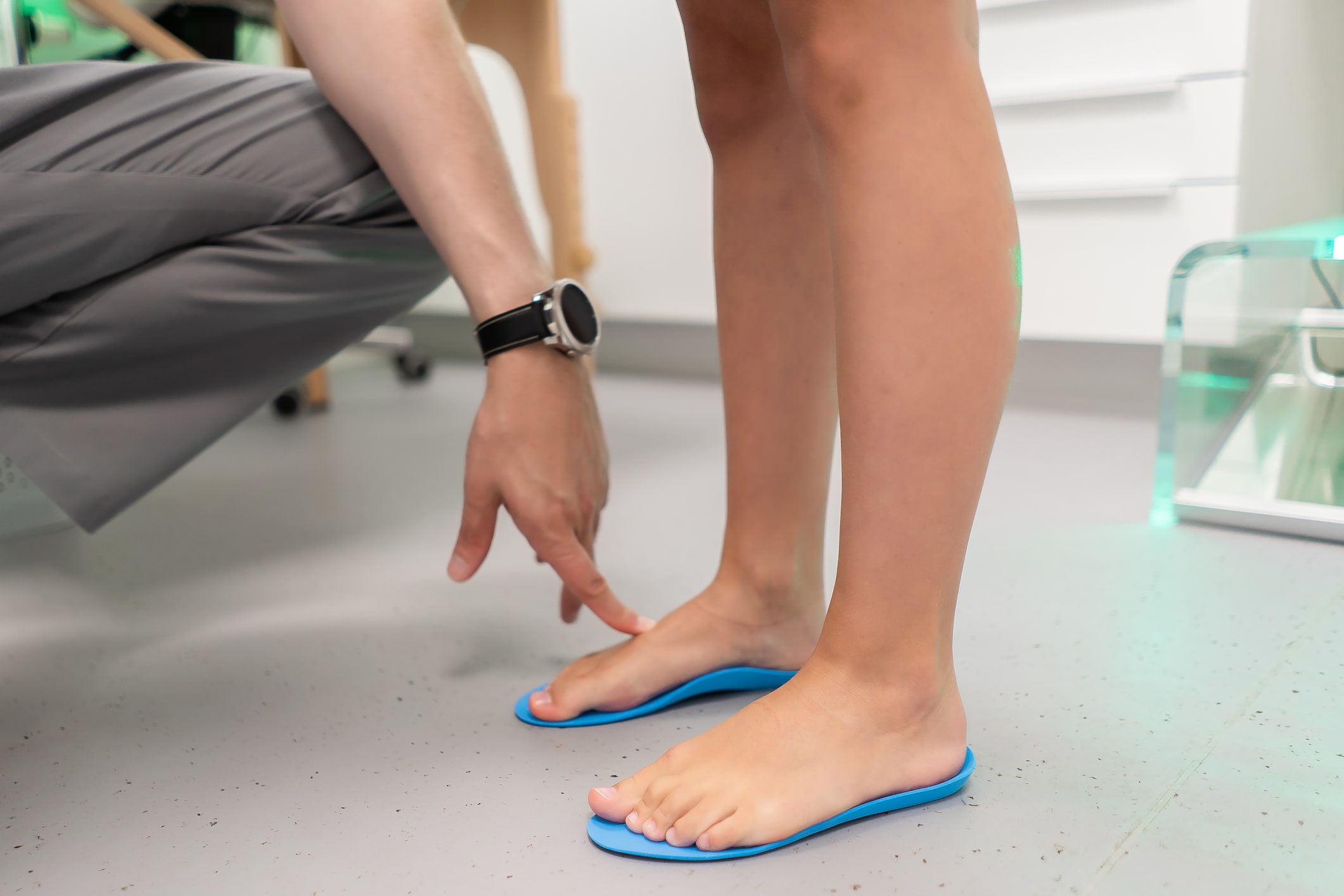Heel pain can be uncomfortable and inconvenient. This is especially the case when it is caused by a condition like plantar fasciitis. It typically occurs as a result of tension and stress on the fascia, the band of tissue connecting your heel bone to the base of your toes.
This common condition affects about 10% of the general population. At Lakes Foot and Ankle Associates in Commerce Township, MI, we have experience treating plantar fasciitis and other types of heel pain. We’ve compiled some information about it to help you manage it.
What is Plantar Fasciitis?
Plantar fasciitis is a condition that results from damage to the plantar fascia in your feet. This band of tissue connects the heel bone to the base of the toes. Overuse, like standing for long periods of time, leads to tears in this tissue, pain, and inflammation.
Symptoms of Plantar Fasciitis
Like any other health issue, recognizing the signs of plantar fasciitis and seeking timely treatment is crucial in managing the condition. Common symptoms include:
- Stabbing pain near the bottom of your heel
- Stiffness or tightness in the arches of your feet
- Intense pain after periods of rest, such as in the morning, which dissipates only to increase as your activity level increases throughout the day
Even if they are mild, your symptoms may still impact your mobility and quality of life. If your symptoms are particularly disruptive to your daily routine, schedule an appointment with one of the podiatrists at Lakes Foot & Ankle, who can help you effectively treat them.
Causes of Plantar Fasciitis
While plantar fasciitis is commonly caused by stress to the plantar fascia in the foot, other risk factors for developing this condition include:
- Strain from prolonged standing or high-impact activities like running
- Anatomical differences in the feet, including flat feet and high arches
- Wearing shoes with poor arch support, overly soft soles, or poor control
- Medical conditions, such as:
- Lupus
- Arthritis
- Obesity
Regardless of the cause, your podiatrist will assess your condition to develop a custom treatment plan to address your heel pain. To learn about your individual risk factors for plantar fasciitis, contact Lakes Foot and Ankle for a consultation.
How to Prevent Plantar Fasciitis
Like any foot condition, plantar fasciitis can be painful and disruptive to your active lifestyle. Fortunately, it is easily preventable. Below are some simple ways you can prevent this condition.
- Stretch before exercising
- Rest after long periods of standing or activity
- Wear properly fitting, supportive footwear
By following these steps, you reduce the strain on your fascia and, in turn, your risk of developing plantar fasciitis. For more advice on how to reduce your risk, schedule a consultation with one of our podiatrists.
How to Treat Plantar Fasciitis
While you can manage mild heel pain at home, it is best to consult with a podiatrist, like those at Lakes Foot and Ankle Associates, to treat plantar fasciitis. They can assess the underlying cause of your pain to develop a treatment plan, which may include:
Rest
Rest can help you recover from plantar fasciitis. This is especially true when you consider how this condition is often a result of overuse and stress on your feet. Your podiatrist can provide you with a timeline for returning to normal activities.
Medication
Anti-inflammatory medication can relieve pain and inflammation in the heel from plantar fasciitis. Mild pain can be managed with over-the-counter medication. For more severe pain, ultrasound-guided steroid injections administered by a podiatrist may be required.
Alternative Therapies
When it is appropriate during their care plan, we teach patients about stretching properly to alleviate stress on the plantar fascia.
MLS Laser Therapy
In some cases, MLS Laser Therapy can be an effective treatment for plantar fasciitis. Using a pair of synchronized lasers at two different wavelengths, it promotes pain relief, reduces inflammation, and boosts your body’s natural healing response.
Custom Orthotics
Because custom orthotics redistribute weight away from the affected area, they can alleviate pain from plantar fasciitis. To meet your specific needs, Lakes Foot and Ankles uses an advanced 3D orthotic scanner to create custom orthotics.
Radial Shockwave Therapy
Radial shockwave therapy is a non-invasive treatment that can relieve chronic foot pain and other symptoms of plantar fasciitis. It uses high-energy sound waves to trigger the body’s natural repair mechanisms to heal soft tissue.
Manage Your Plantar Fasciitis With Lakes Foot & Ankle
If you’re experiencing heel pain that won’t subside, see a podiatrist specializing in diagnosing and treating plantar fasciitis, like those at Lakes Foot & Ankle Associates. We can help you create a treatment plan that will address the root cause of your heel pain and allow you to continue your daily routine without discomfort. To get started, contact us to schedule an appointment.
Effective Plantar Fasciitis Treatment at Lakes Foot & Ankle
Heel pain from plantar fasciitis can affect your daily activities and personal comfort. Get back to normal as soon as possible with effective treatment from a podiatrist specializing in the management of plantar fasciitis. For more information or to schedule an appointment, call Lakes Foot & Ankle Associates in Commerce Township, MI, at (248) 453-2288 or contact us online.



